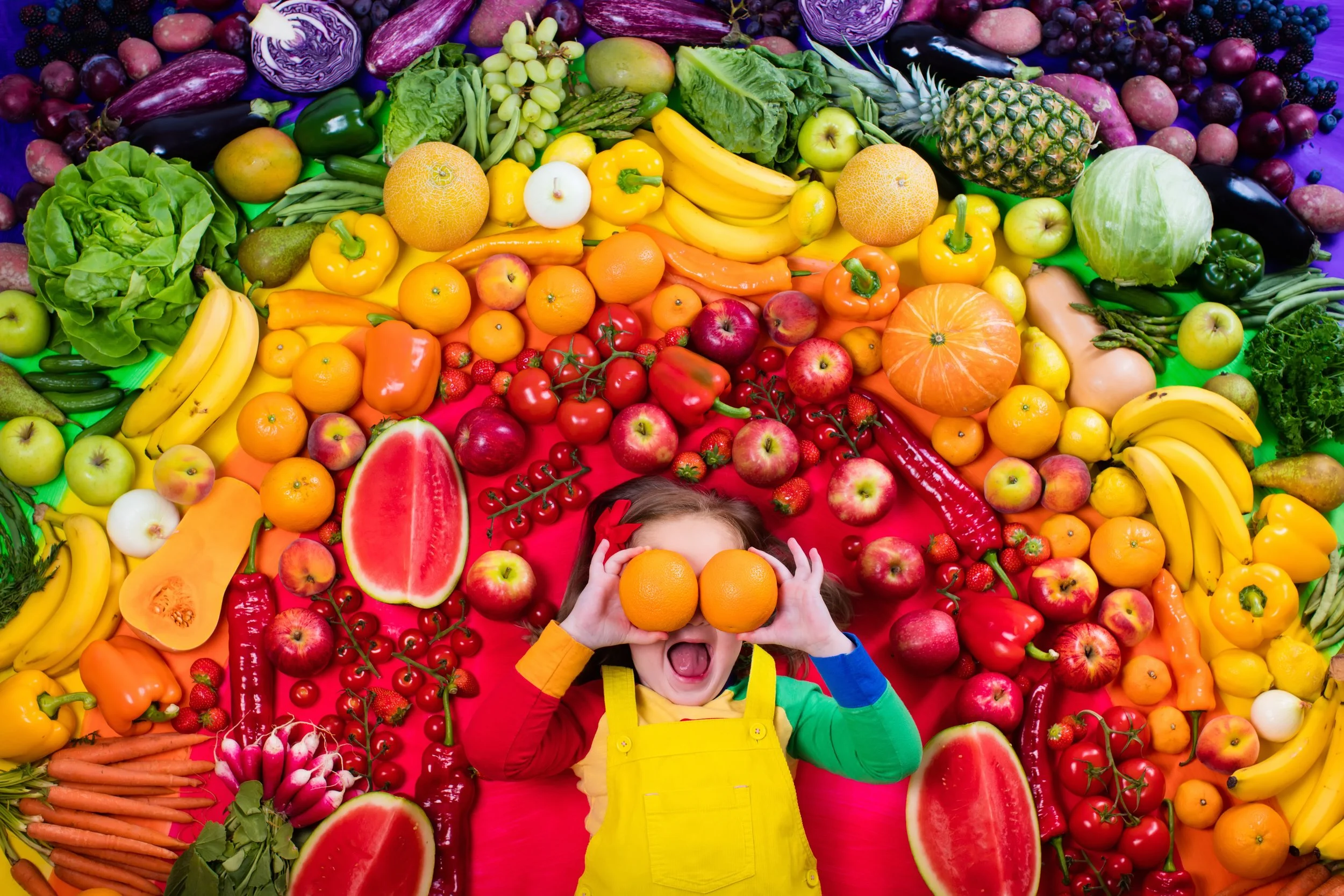Pediatric Nutrition: Eat the Rainbow
One of the biggest challenges parents face in raising children is how to feed them. In addition to sifting through the conflicting information published about nutrition every day, parents must also deal with strong opinions from well-meaning friends and family. Nutrition itself is a relatively new science, so as scientists look for truth, there are theories that must be tested and proved, or disproved. This leaves us with studies for or against nearly every dietary issue, further confusing everyone who just wants to eat well and teach their children to do the same.
When it comes to feeding children, going back to basics is the safest place to start. There are a few tenants of nutrition that have been tried and tested over again and they can be boiled down to a phrase eloquently coined by Michael Pollan: “Eat food, not too much, mostly plants.”
“Eat food” means eat real food. Foods made in a lab can’t compete with the nutrient dense foods that grow on our planet. The bulk of the foods we eat should be minimally or completely unprocessed, they should have fewer than 15 ingredients, and those ingredients should be pronounceable and recognizable. Processed foods are a big part of our world and avoiding them entirely is a difficult, if not impossible, feat, so focus on just making the best possible choices in your current circumstances.
“Not too much” refers to portion control. Americans are notorious for our inflated portion sizes and most of us have a hard time following our bodies’ cues that tell us when enough is enough. Teaching kids to listen to those cues is an important job for parents to foster. One strategy is to give your child small portions and teach them to assess whether they want a second helping.
“Mostly plants” encourages eating fruits, vegetables and whole grains, all in as close to their natural state as possible. According to the CDC, 6 out of 10 children did not eat adequate fruits and 9 out of 10 children did not eat sufficient vegetables in the years 2007-2010. Even more startling is that 1/3 of the vegetables eaten were white potatoes, 63% of which were fried. While there is nothing wrong with loving white potatoes, they should only be a part of our vegetable intake, not the main source. One of the most important things a parent can do for the health of their child is to teach them to eat plants from a young age.
Once we establish this foundation of how to eat, the next step is to ensure kids are getting a good variety of foods. This is where we look to the rainbow. Different colored foods have different vitamins and phytochemicals, so kids should be eating a few servings from each color every week.
Red foods are important for heart heath and memory. Some red foods to incorporate are strawberries, tomatoes, red peppers, red onion, red cabbage, cherries, watermelon, and grapefruit.
Orange and yellow foods promote healthy eyes and immune function. Orange and yellow foods include carrots, mango, oranges, peaches, sweet potato, yellow/orange peppers, butternut squash, cantaloupe, and apricot.
Green foods are needed for strong muscles, bones, and eyes. Green foods include spinach, broccoli, bok choy, cucumber, green peppers, green beans, parsley, kale and arugula.
Blue and purple foods support memory and are rich in antioxidants. Blue and purple foods to incorporate are blueberries, blackberries, purple grapes, plums, beets, and eggplant.
Consider what foods your kids eat on a regular basis and see if you can incorporate a new color into their diet this week!
References:
https://michaelpollan.com/reviews/how-to-eat/

